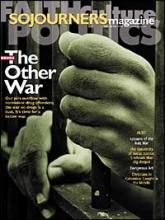Religious concern about the use of drugs and alcohol has been strong in America since the Second Great Awakening. In the 19th century, a strong prohibition movement intensified after the Civil War. This crusade was a part of the progressive movement for the abolition of slavery, for public education, for women suffrage, and for other industrial and social reforms. There were, however, anti-immigrant, anti-Catholic, anti-Semitic, and anti-urban elements to this crusade as Catholic immigrants from Ireland and Italy and Jews from eastern Europe were regular consumers of spirits or wine.
Many U.S. and British Christians were revolted—as were many Chinese—by Britain's hugely profitable opium business in China in the 19th century. Chinese addiction rates were estimated at 27 percent of the adult population by 1900. The Philippine islands, acquired by the United States after the Spanish American War, also had a sizable opium-consuming population. A Boston minister, Charles Henry Brent, was appointed the first Episcopal bishop of the Philippines and became a leader of the global anti-drug movement.
During the battle over liquor prohibition, almost all religious bodies supported anti-narcotics legislation with equal fervor, as was noted in 1973 in the final report of the National Commission on Marihuana and Drug Abuse (the Shafer Commission). The repeal of alcohol prohibition in 1933 forced churches to confront again the morality of drinking and to develop new strategies regarding alcohol abuse and new ministries to alcoholics. Alcoholics Anonymous developed in the late 1930s with its strong reliance upon spiritual awakening and support. Yet there was little new thinking about narcotics.
Read the Full Article

